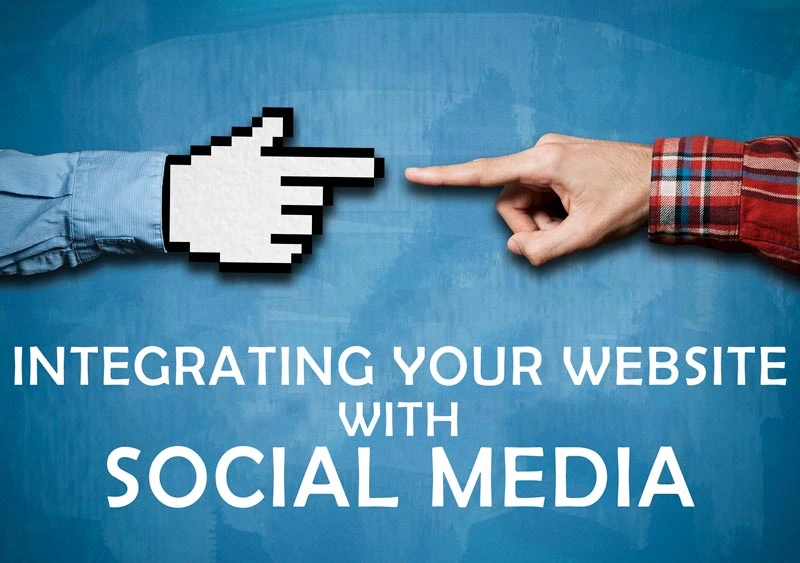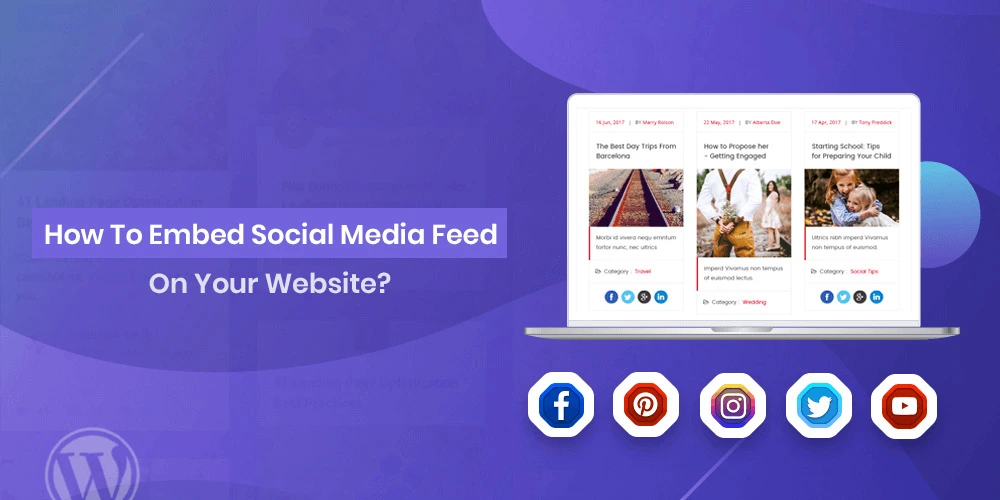
Social media integration is now a fundamental part of building effective websites. To begin with, if you’re wondering how to add social media features to your site, you’re in the right place. By incorporating these platforms, you can encourage more interaction from visitors. Moreover, it can boost your search engine rankings and provide lively, new content without the hassle of manual updates. Whether you run a business, a blog, or an online store, this strategy can help attract more visitors and make your brand more memorable. In this article, we’ll look at simple yet effective ways to smoothly include social media features into your website.
1.Why Should You Link Your Website with Social Media?
Connecting your website with social media brings several advantages, such as:
- Enhanced User Engagement: Visitors can interact with social content directly on your site, increasing page time.
- Improved SEO Performance: Search engines favor regularly updated, high-quality content, which social media posts provide.
- Boosted Social Media Following: Social feeds encourage website visitors to follow and engage with your social profiles.
- Fresh Content Without Manual Updates: Automated social media integration ensures that your website always has fresh content.
- Increased Trust and Social Proof: Showcasing user-generated content and customer testimonials builds credibility and trust.
2. Top Ways to Enhance Engagement with Social Media

a. Embedding Social Media Feeds
One of the simplest ways to integrate social media is by embedding feeds from platforms like Instagram, Facebook, Twitter (X), LinkedIn, and TikTok. By doing so, you allow visitors to see your latest posts without leaving your site. As a result, this keeps users engaged and encourages them to explore your content further.
How to Embed Feeds:
- To begin with, use official platform embed codes such as the Facebook Page Plugin, Instagram Embed, or Twitter Publish. This way, you ensure better compatibility and performance. Moreover, using official tools often provides customization options and ensures the content looks professional.
- Additionally, you can utilize third-party plugins like Smash Balloon, Taggbox, or Juicer for seamless integration. These tools, in fact, offer greater flexibility and customization, making it easier to display social media content beautifully on your site.
- To begin with, ensure the feed is responsive and mobile-friendly so that it provides a better user experience. In addition, a well-optimized feed improves both engagement and accessibility across all devices.
b. Adding Social Media Widgets and Plugins
Moreover, social media widgets and plugins can display live feeds, social buttons, or even social proof testimonials, thereby enhancing user interaction and credibility.
Popular Widget Options:
- Instagram Feed: Showcasing the latest Instagram posts on the homepage or product pages.
- Twitter/X Timeline: Embedding a live Twitter feed for updates and trends.
- Facebook Page Plugin: Allowing visitors to like and share your page without leaving the site.
- Pinterest Boards: Featuring Pinterest boards related to your brand’s niche.
c. Social Media Share Buttons
To increase visibility, make it easy for visitors to share your website content by adding social media share buttons. This way, your content can reach a wider audience quickly.
How to Implement:
- Use plugins like AddThis, ShareThis, or Sumo to add social share buttons.
- Ensure the buttons are placed strategically (e.g., blog posts, product pages, landing pages).
- Optimize for mobile responsiveness to enhance usability.
d. Social Login Integration
To enhance user convenience, allow users to log in using their social media accounts for a seamless experience. As a result, it simplifies the process and encourages more sign-ups.
Benefits of Social Logins:
- Faster and hassle-free signup process.
- Collect user data for personalized marketing.
- Encourage social sharing through connected profiles.
Popular platforms supporting social logins include Google, Facebook, LinkedIn, and Twitter (X). WordPress plugins like Nextend Social Login make implementation easier.
e. Showcasing User-Generated Content (UGC)
In addition, user-generated content (UGC) such as customer reviews, testimonials, and photos builds trust and credibility.
Ways to Display UGC:
- Embed Instagram hashtags to feature customer posts.
- Use tools like Yotpo or Trustpilot for customer reviews.
- Create a dedicated testimonial page featuring social proof.
3. Tips to Improve Website Performance with Social Platforms
Therefore, to ensure effective integration, consider the following best practices.
a. Keep it Responsive and Mobile-Friendly
Since many users browse via mobile, it’s essential to ensure that social media feeds, buttons, and widgets are optimized for mobile devices. Moreover, this enhances user experience and increases engagement.
b. Balance Design and Speed
Overloading your website with social media integrations can slow down performance. Use caching and optimization tools to maintain site speed.
c. Use Analytics to Measure Impact
Track the impact of social media integration using Google Analytics and social media insights. Monitor key metrics like:
- Social referral traffic
- User engagement rates
- Click-through rates on social buttons
d. Align Content with Brand Identity
Ensure the social media content displayed aligns with your brand’s tone, style, and messaging to maintain consistency across platforms.
Integrating social media posts into your website is a powerful strategy to enhance engagement, improve SEO, and maintain a dynamic online presence. To achieve this, you can embed feeds, use share buttons, showcase user-generated content, and optimize performance. As a result, you create a seamless and engaging experience for your visitors. Furthermore, when you implement these strategies effectively, you’ll likely see a noticeable increase in both engagement and traffic.




